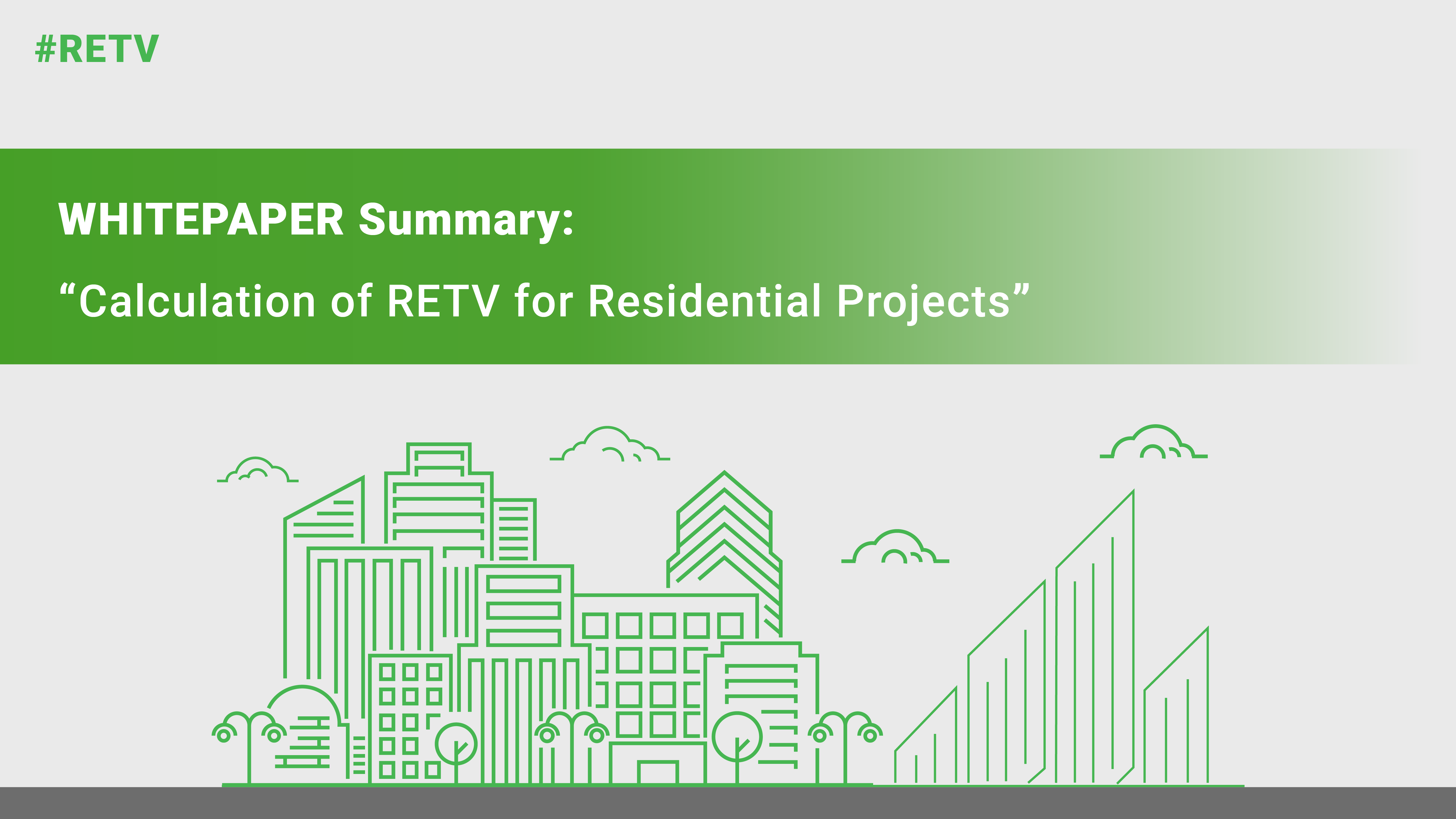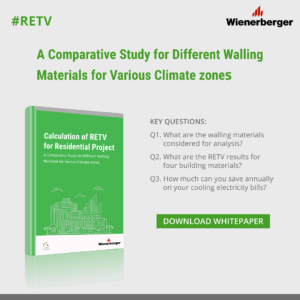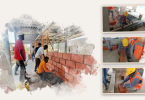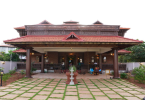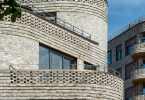This is a summary of the Report ‘Calculation of RETV for Residential Projects: A Comparative Study of Different Walling Materials for Various Climate Zones’ conducted by GKSPL (Greentech Knowledge Solutions Pvt. Ltd.). The report analyzed the RETV values for four different walling materials, which were
200mm Porotherm Thermobrick
200mm Porotherm HP
200mm Solid Concrete blocks
160mm RCC shear walls
The objective of this report was to determine the RETV values for these products in four different climate zones – temperate, composite, warm, and humid.
RETV or Residential Envelope Thermal Value is a measurement of the thermal performance of each material. RETV, in turn, depends upon another measurement called ‘U Value’ which measures the heat transmission in a given material. It is important to note that the lower the U Value, the lower the RETV. The lower the RETV, the better it is to use as walling material. The study was conducted across four cities falling within different climate zones in Southern India, as per the methodology provided in the Eco-Niwas Samhita, 2018. The four cities were chosen
were Bangalore (temperate), Hyderabad (composite), Chennai (warm and humid) and Cochin (warm and humid).
Once the RETV value of the four different materials was calculated, it provided a comparison of these materials and indicated which had the highest levels of thermal comfort. RETV was also used to determine the cost savings in external air conditioning, along with the payback period.
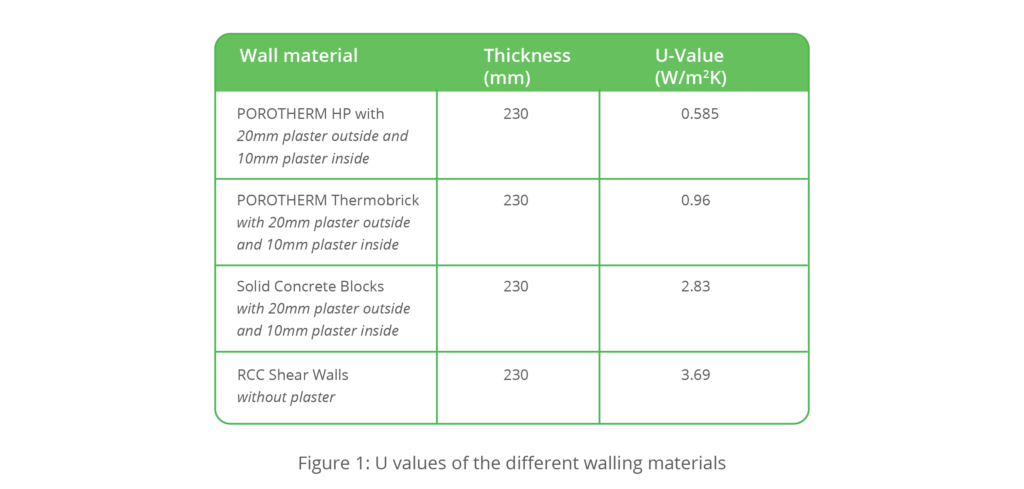
From Figure 1, we can see that of the four products, Porotherm Thermobrick had the lowest U Value of 0.585 as compared to RCC Shear Walls, which had the highest value of 3.69. This indicates that the clay-based Porotherm blocks afforded the highest thermal comfort of all the different materials tested.
The temperature was recorded thrice a day at each of the four sites. There was a marked difference in the range of 3° C to 7° C between the Porotherm house and the concrete block house, from afternoon to nightfall.
The results of this study are an important milestone to establish the gains that the construction industry can get by using RETV complaint materials for walling. RETV calculations only involve the external surfaces of the building, including doors and windows.
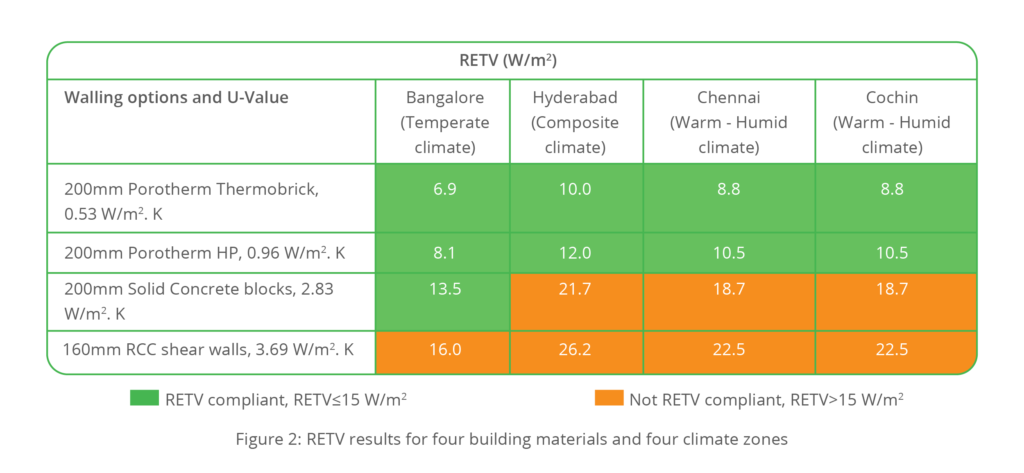
The key takeaways of the study for all participants of the building and construction industry, including builders, consultants, and architects are listed below: Meeting Government Green Initiatives
The Bureau of Energy Efficiency (BEE) is already in the process of drafting mandatory requirements in terms of RETV values for building materials. The building industry can use the key findings of this report to ensure that going ahead, they use RETV compliant walling materials. While concrete and cement are cheaper and more readily available, the extra costs can be easily offset. Porotherm bricks are lighter and more durable. As such, overall construction costs using these would come down. Given the high thermal insulation that RETV compliant materials provide, the natural thermal efficiency will go a long way in meeting green initiatives and contributing to saving the planet.
Influence on Air Conditioning Cooling Loads Leading to Cost Savings RETV has a high correlation with sensible cooling loads required for air conditioning. So, by using RETV compliant materials, the electricity costs of using external air conditioning would come down. The study found that for a typical 100 m2 (appx. 1080 Sq. Ft.) of air-conditioned built-up area, the sensible cooling load using RCC would be 18,700 kWh(th) as compared to just 10,200 kWh(th) if using Porotherm bricks. Using a Coefficient of Performance of 3.0 for the air conditioner, for the same built-up area, RCC shear walls would consume 6,233 kWh units annually, while Porotherm Thermobricks would consume just 2,833 kWh units. This leads to a direct annual cost saving of approximately ₹ 7,000 to ₹ 24,000, based on the climate zone as well as power tariffs.
The figure below gives us a clear idea of the potential annual savings with the use of Porotherm
bricks.
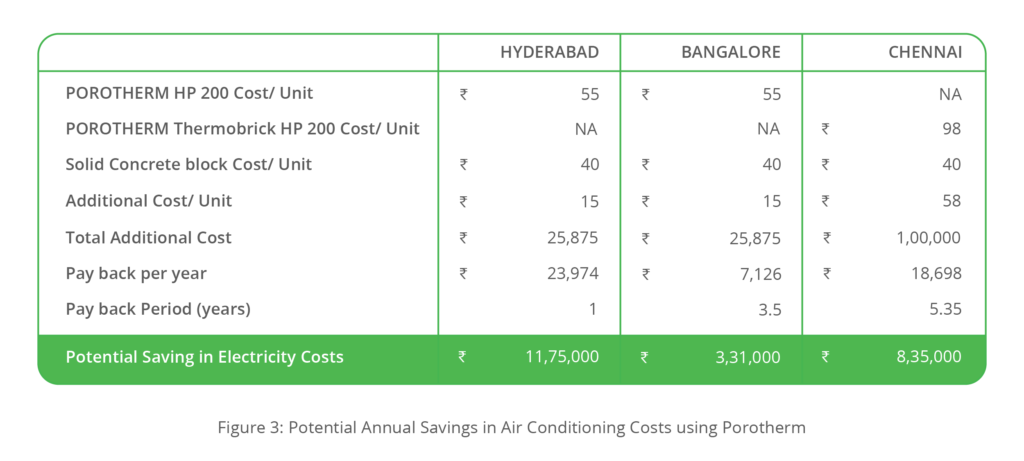
High Living Comfort for Residents Porotherm blocks provides better air quality and air circulation in the house as they are made from clay, a 100% naturally occurring material, which is free from any chemical additives. High thermal efficiency allows houses to naturally stay cooler in summer and warmer in winter, reducing the requirement for artificial air conditioning. These walling materials provide a more comfortable and liveable environment to its residents.
Conclusion
The above study can bee seen as a landmark in the era of green and sustainable construction. Until now, the construction industry was seen as one of the major pollutants around the world, but with initiatives like RETV compliance, we are getting closer to sustainability, lead by the construction industry.
________________________________________________________________
Need more insights on RETV, download the Whitepaper now:
Like this story? Or have something to share? Write to us: gosmartbricks@gmail.com or connect with us on Facebook and Twitter.


